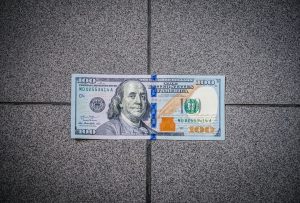Forex chart patterns are essential tools for traders to analyze and predict price movements in the foreign exchange market. Reading forex chart patterns can be challenging for beginners, but it is a skill that can be learned with practice and patience. In this article, we will explain how to read forex chart patterns and how to use them to make profitable trading decisions.
Understanding Forex Chart Patterns
Forex chart patterns are visual representations of price movements in the forex market. There are several chart patterns that traders use to analyze the market, including trendlines, support and resistance levels, channels, triangles, and head and shoulders patterns. These patterns provide valuable information about the market’s behavior and help traders to identify potential trading opportunities.
Trendlines
Trendlines are one of the most important chart patterns in forex trading. They are lines that connect two or more price points on a chart, indicating the direction of the market’s trend. If the trendline is sloping upwards, it indicates an uptrend, while a downward sloping trendline indicates a downtrend. Trendlines can be used to identify potential entry and exit points for trades.
Support and Resistance Levels
Support and resistance levels are points on a chart where the price tends to reverse its direction. Support levels are price points where the demand for a currency increases, causing the price to bounce back up. Resistance levels are price points where the supply of a currency increases, causing the price to drop. Traders use support and resistance levels to identify potential entry and exit points for trades.
Channels
Channels are areas on a chart where the price tends to move within a range. There are two types of channels: ascending channels and descending channels. Ascending channels are characterized by a series of higher highs and higher lows, while descending channels are characterized by a series of lower highs and lower lows. Traders use channels to identify potential entry and exit points for trades.
Triangles
Triangles are chart patterns that are formed by two converging trendlines. There are three types of triangles: ascending triangles, descending triangles, and symmetrical triangles. Ascending triangles are characterized by a flat resistance level and a rising support level. Descending triangles are characterized by a flat support level and a descending resistance level. Symmetrical triangles are characterized by two converging trendlines that meet at a point. Traders use triangles to identify potential entry and exit points for trades.
Head and Shoulders Patterns
Head and shoulders patterns are chart patterns that are formed by three peaks, with the middle peak being the highest. The pattern resembles a head and two shoulders, hence the name. The first and third peaks are called the shoulders, while the middle peak is called the head. Traders use head and shoulders patterns to predict potential trend reversals.
Conclusion
Forex chart patterns are essential tools for traders to analyze and predict price movements in the foreign exchange market. Understanding how to read forex chart patterns takes time and practice, but it is a skill that can be learned by anyone. By using chart patterns, traders can identify potential entry and exit points for trades and make profitable trading decisions.





